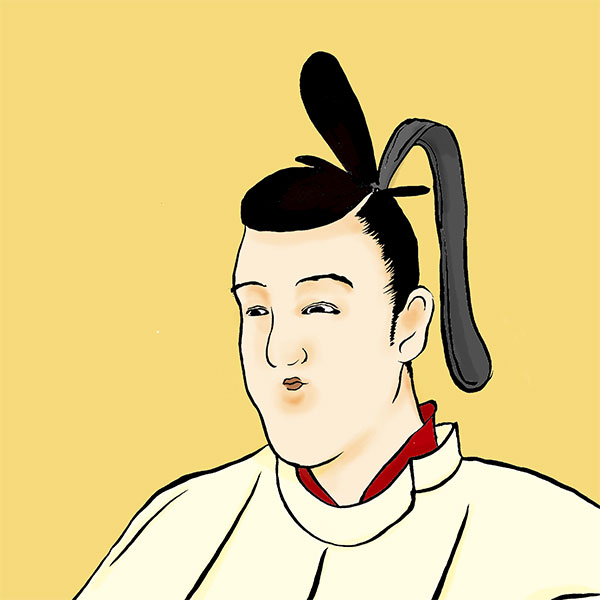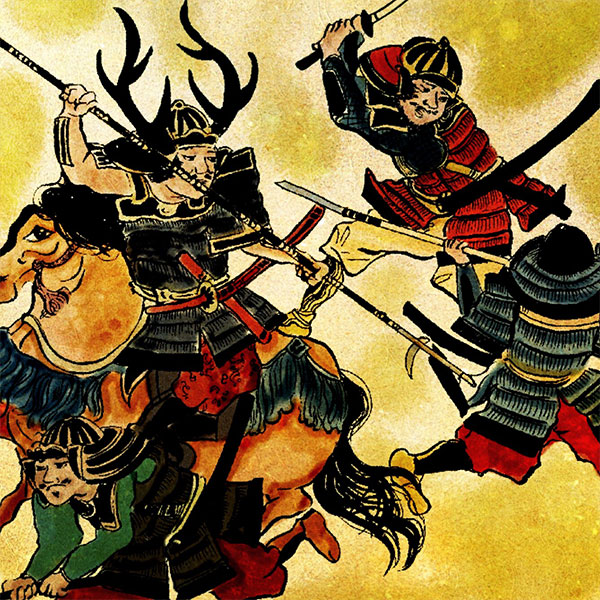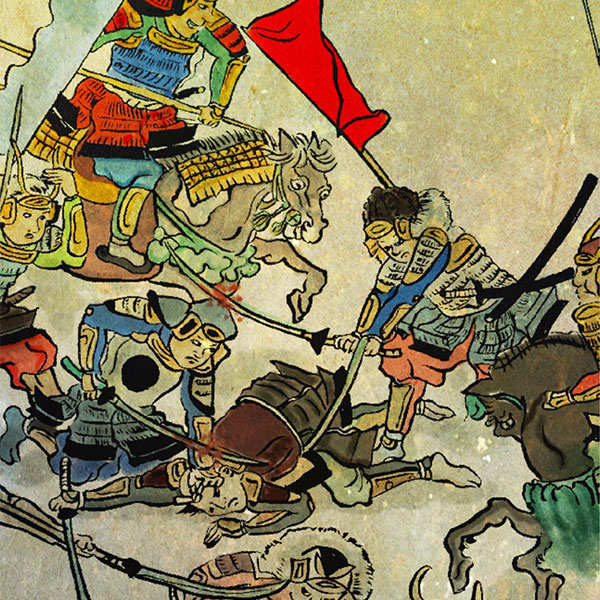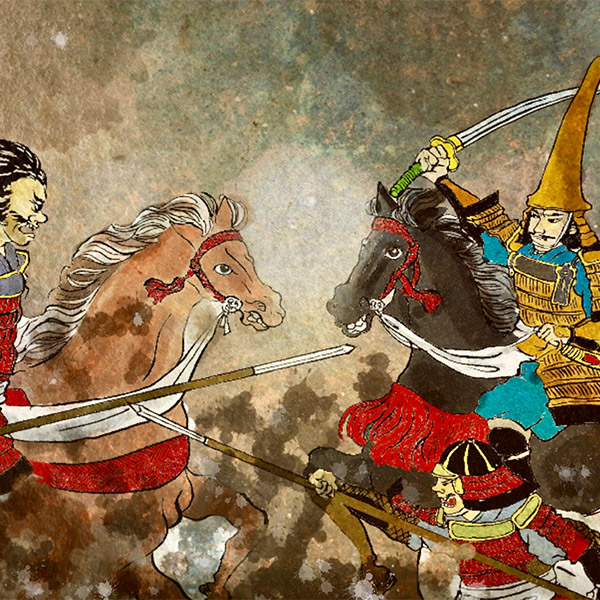Toyotomi Hideyori (2/2)The second generation was at the mercy of the times.

Toyotomi Hideyori
- Article category
- biography
- name
- Toyotomi Hideyori (1593-1615)
- place of birth
- Osaka Prefecture
- Related castles, temples and shrines

Osaka Castle

Fushimi Momoyama Castle

Nijo Castle
The temple bell was completed in April, and the chief magistrate, Katsumoto Katagiri, asked Bunei Seikan of Nanzenji Temple to write an inscription on the temple bell. In advance, Katsumoto had made detailed reports to Tokugawa Ieyasu, who was retiring to Sunpu, about the instructor and date and time of the Great Buddha's eye-opening memorial service so as not to provoke the Tokugawa shogunate. Opinions differed over the status of the Tendai and Shingon sects at the time, leading to conflict.
On July 26 of the same year, Ieyasu wrote to Katsumoto, ``The opening of the eyes and the memorial service for the Great Buddha Hall are on the same day, and the Daibutsu Hall ridge tag and temple bell inscription do not match the old tradition.Also, because there is a problem with the contents, the opening of the eyes and the memorial service for the Great Buddha Hall are on the same day. He ordered that the memorial service be postponed.
Furthermore, in August, Ieyasu had Gozan monks and Hayashi Razan decipher the bell inscription. At this point, Hayashi Razan judges that ``the inscription on the bell has the intention of cursing Ieyasu,'' but on the other hand, the monks of Gozan say ``It can be said that it was an oversight to violate the inscription on the bell, but the intention of cursing Ieyasu is not. "No," he answered.
The Toyotomi side made the excuse that they had intentionally included the posthumous name as a ``hidden title'' as a congratulations to Ieyasu, but the shogunate was not convinced.
Since the presence of Toyotomi Hideyori was a hindrance to the Tokugawa shogunate, Ieyasu decided to attack Osaka Castle after this incident, and Toyotomi's side also began preparations for war.
Osaka Winter Camp and Summer Camp: Death of Hideyori
Toyotomi Hideyori requested reinforcements from the feudal lords who favored Hideyoshi, such as Masanori Fukushima and Yoshiaki Kato, but none of the feudal lords appeared on Toyotomi's side. On the other hand, in Osaka Castle, former feudal lords and feudal lords who were defeated in the Battle of Sekigahara, such as Nobushige Sanada (Yukimura), Mototsugu Goto, Morichika Chosokabe, Katsunaga Mori, and Zento Akashi, sided with the Western army and rebelled. As a result of this, people who became ronin gathered at Osaka Castle one after another.
The roninshu had a variety of reasons, including resentment towards the Tokugawa family and a desire to rise to the top, but although their morale was strong, they were a bunch of people and lacked cohesion. Furthermore, it is said that the reason for the defeat was that these roninshu were in conflict with Yodo, the mother of Harunaga Ohno and Hideyori, and they were unable to maintain control until the end. Initially, Nobushige Sanada (Yukimura) and others advocated an invasion of Kyoto, but Harunaga Ohno and others stubbornly opposed it, and it was decided to siege Osaka.
In the battle at Osaka Castle, the shogunate army had a tough time due to the efforts of the roninshu and the defensive strength of Osaka Castle, and even when they tried to invade the castle, they were blocked by a large moat. It is said that the Shogunate side suffered losses in the Battle of Sanada Maru. In order to put psychological pressure on the castle, the shogunate's army bombarded the castle day and night, and it is said that one of the shells that flew as far as the main keep landed in Yodo's room, crushing his maid and making her tremble.
As both the Toyotomi side and the shogunate army began to run out of food and ammunition, Ieyasu proposed a peace treaty, and despite some opposition from the Toyotomi side, the peace deal was concluded.
Afterwards, the peace agreement included the destruction of Osaka Castle's moat as a condition, but the Toyotomi side did not fulfill this, so the Tokugawa shogunate not only filled in the moat completely, but also destroyed part of the castle. Osaka Castle was left with just the main keep, and its once-sturdy defense suddenly declined.
In 1615, the Toyotomi side refused to expel all the ronin and vacate Osaka Castle and began digging up the moat, so Ieyasu declared that the peace treaty had been broken and resumed war, and the Osaka Summer Siege broke out.
With White's defenses weakened and the Toyotomi side inferior in military power, they challenged the decisive battle when Ieyasu and Hidetada father and son set up camp in Osaka. (Battle of Tennoji and Okayama) Here, Nobushige Sanada (Yukimura) hopes that Hideyori will run to the front in order to boost the morale of the Toyotomi army, but this does not happen. In this battle of Tennoji and Okayama, the Toyotomi side lost the powerful military commander Nobushige Sanada (Yukimura) and others, and the Tokugawa side finally invaded Osaka Castle. Hideyori committed suicide along with Yodo and Harunaga Ohno. He passed away at the age of 23.
The theory that Hideyori survived even after the fall of Osaka Castle
When Osaka Castle fell during the Osaka Summer Siege, no one witnessed the moment Hideyori and his friends died, and their bodies were never found, so there was a strong rumor at the time that they were still alive.
For example, in a letter to the East India Company left behind by Richard Cox, who was in Hirado, it is said that he ``fled to Satsuma and Ryukyu,'' and in Jean Classet's History of Western Education in Japan, ``One theory is that he took his mother and wife with him.'' There is a description that says, "It is said that he approached the most important feudal lords in the country, recruited soldiers, and plotted another attack."
The nursery rhyme that was popular in Kyoto at the time, ``The flower-like Hideyori was led by the demon-like Sanada, and he retreated to Kagoshima'' was also heard in Matsushiro, where Nobuyuki Sanada lived, according to ``Yukimura-kun Biography.'' It is said that there were constant rumors among the common people that he was still alive.
In addition, the ``Shoyoroku'' states, ``A ronin settled in Taniyama, Satsuma Province at the beginning of the Genna era, and lived in a house owned by the lord of the country.He loved alcohol and was always drunk, lying around all over the place. )” was called. The lord of the country ordered him not to interfere, and the residents secretly rumored that he was Lord Hideyori.'' In fact, there is a tower in Shimofukumoto-cho, Kagoshima City that is said to be the tomb of Hideyori Den, but these are just legends and are not true.
However, it is said that the common people of Osaka at the time were sympathetic to Toyotomi Hideyoshi and Hideyori, and this legend can be said to have arisen out of sympathy for Hideyori, who had died an unnatural death.
Hideyori's grave and head mound
During an investigation of the Sannomaru ruins of Osaka Castle in 1980, a skull believed to be that of Toyotomi Hideyori was unearthed from the excavation site. Afterwards, the bones were examined in detail and determined to be those of Hideyori, based on the fact that the bones had been carefully buried, the remains of the kaiseki, and artifacts excavated from the surrounding area.
In 1983, 368 years after Hideyori's death, a head mound was built and his head was enshrined at Seiryoji Temple, where Hideyori had worked so hard to revive the temple. A memorial tower for the spirits of the Osaka Jin is also built next to the head mound.
By the way, Hideyori's grave is located at Yogen-in Temple, named after Nagamasa Azai's name, which is located east of Sanjusangen-do Temple in Kyoto.
Hideyori and Osaka Castle
Nowadays, the name is different from Osaka Castle, but at the time it was called Osaka Castle.
The remains of Osaka Castle, which remains today, are mostly buried underground after being burned during the Osaka Siege. ) These are the remains of Osaka Castle (Tokugawa Osaka Castle), which underwent renovations that amounted to substantial new construction.
In the Meiji period, the government converted the castle grounds into military land. The Osaka Artillery Arsenal (Osaka Army Arsenal), which mainly produced heavy weapons such as artillery and vehicles, was established on the vast site extending to the JNR Joto Line (currently the Osaka Loop Line) on the east side, so it was used during the Pacific War. It also became a bombing target for the US military.
The current castle tower was built in 1928, when Sekiichi, the mayor of Osaka at the time, proposed a project to improve Osaka Castle Park, including rebuilding the castle tower, and construction began as a commemorative project for Emperor Showa's accession to the throne. It also survived the fire and continues to this day.
Nowadays, Osaka Castle Park has been developed around it and has become a place of relaxation for citizens. Seasonal flowers such as plums and cherry blossoms are planted here, and it is loved as a symbol of Osaka, attracting tourists from all over the world. Osaka Castle Hall, where other events such as concerts are held, is visited by young and old alike, and there are many runners running through the park.The lively atmosphere throughout the year may be exactly the fun atmosphere that Taiko-san loved.
Toyokuni Shrine in Osaka Castle Park also enshrines Hideyori along with his father Toyotomi Hideyoshi and uncle Hidenaga. It is a hidden power spot that is visited by people who like Sengoku military commanders and others who wish for good luck.
Reread Toyotomi Hideyori's article

- WriterTomoyo Hazuki(Writer)I have loved history and geography since my student days, and have enjoyed visiting historical sites, temples and shrines, and researching ancient documents. He is especially strong in medieval Japanese history and European history in world history, and has read a wide range of things, including primary sources and historical entertainment novels. There are so many favorite military commanders and castles that I can't name them, but I especially like Hisashi Matsunaga and Mitsuhide Akechi, and when it comes to castles, I like Hikone Castle and Fushimi Castle. Once you start talking about the lives of warlords and the history of castles, there's a side of you that can't stop talking about them.









